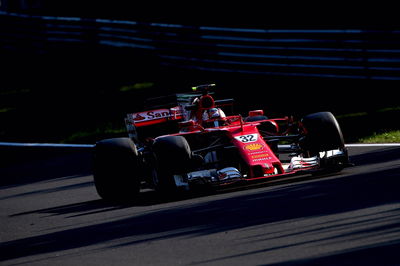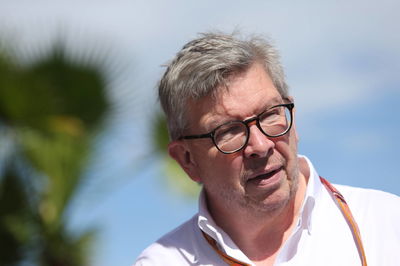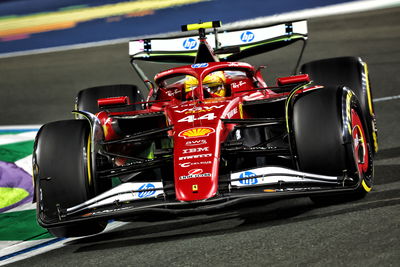Why the time has come for Ferrari to be bold in 2019
While the title battle raged on at the Circuit Paul Ricard and chaos ensued at the front on Sunday, F1’s quietly confident rising star continued his impressive start to the season with the sort of performance that is becoming a regular occurrence.
Charles Leclerc leaves France with his fourth top 10 finish from the past five rounds, having claimed 10th place with another strong drive that saw him collect his 11th point of a what is shaping up to be a stunning rookie campaign.
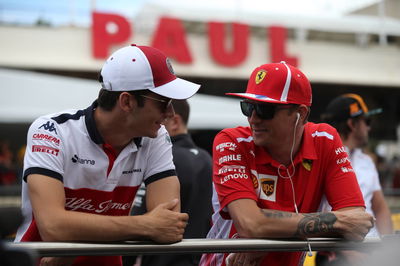
While the title battle raged on at the Circuit Paul Ricard and chaos ensued at the front on Sunday, F1’s quietly confident rising star continued his impressive start to the season with the sort of performance that is becoming a regular occurrence.
Charles Leclerc leaves France with his fourth top 10 finish from the past five rounds, having claimed 10th place with another strong drive that saw him collect his 11th point of a what is shaping up to be a stunning rookie campaign.
The Monegasque sits 14th in the championship standings - ahead of established drivers including Stoffel Vandoorne, Romain Grosjean and teammate Marcus Ericsson, while his points haul has helped Sauber vault above Williams and become challengers in F1’s midfield pack.
Rightly so, his results are not going unnoticed. Ferrari is suitably impressed, reportedly to the extent it is seriously considering Leclerc as a replacement for out-of-contract Kimi Raikkonen in 2019. But will Ferrari finally take an unexpected leap of faith?
Hard lessons along the way
Leclerc has enjoyed close ties with the Scuderia for much of his junior career. As a childhood friend and godson of the late Jules Bianchi - considered Raikkonen’s original successor until his untimely and tragic death in 2015 following a crash during the 2014 Japanese Grand Prix - Leclerc had the perfect tutor.
His rise up the karting ranks and single-seater ladder coincided with an induction into the Ferrari Driver Academy, and Leclerc’s success showed no signs of stopping as he sealed back-to-back titles in GP3 and Formula 2 at a canter. No wonder then that ever since his arrival to the F1 paddock with the revitalised and rebranded Alfa Romeo Sauber team was made official in December last year, Leclerc has faced a great deal of scrutiny and expectation.
Such was the level of anticipation surrounding Leclerc’s debut in F1, it seemed something of an anti-climax when the much-hyped Ferrari protege was out-qualified by his teammate in Australia and Bahrain as, by his own admission, he struggled to get to grips with the step up from F2 in the early rounds.
"Even being in this sport since I was three, I did not expect that jump to be so big. The amount of procedures, and changes in driving style, just everything, is a whole step forward,” Leclerc explained.
"It was difficult for me at the beginning. Maybe what I would have wished is to understand the car a bit quicker. But two or three races, to learn car completely is not huge.”
But a change in driving style, coupled with a calculated, more self-critical approach, paid off handsomely as Leclerc claimed a remarkable sixth place during a crazy Baku race, paving the way for his current streak of five consecutive Q2 appearances - four of which he has converted into top 10 finishes. Points could have been possible at his home race in Monaco too, had he not suffered a dramatic brake failure in the closing stages.
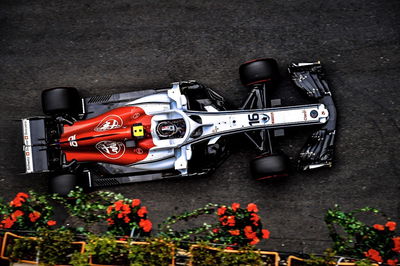
Showing all the right signs
So has Leclerc shown enough to warrant a move to Ferrari? Former Renault boss and current Sauber team principal Frederic Vasseur, who oversaw the GP2 title-winning campaigns of Hamilton and 2016 world champion Nico Rosberg during his time at leading junior single-seater squad ART Grand Prix, knows the qualities that make certain drivers stand out above the rest.
When asked if he saw similar characteristics between Leclerc and the likes of Hamilton and Rosberg at April’s Azerbaijan Grand Prix (prior to Leclerc claiming his first F1 points), Vasseur told Crash.net: “I think the big difference is that when Lewis moved into F1 in 2007, or Nico the year before, they did something like 20 days of testing before the start of the season. Now that you are starting your first race with three, four, five test days.
“The first tracks are not the easiest ones. You have to learn the tracks in Melbourne, Shanghai, Azerbaijan - the process is tough. If you have a look at the other rookies on the grid, it’s not so easy.
“I’m still am convinced that Charles is one of the most performing guys in my life,” Vasseur added. “He’s fully dedicated. He has to manage perhaps this stage of his career is a bit strange for him because he’s used to winning, but it’s part of the process and part of the learning curve also.”
What followed was a quite remarkable turnaround in form, underlying Leclerc’s maturity to firstly acknowledge any weakness, and to learn from it by implementing necessary changes. Following the Canadian Grand Prix - in which he once again rose into the top 10 - Leclerc revealed he is in a constant search for negatives in order to improve his driving.
It was a similar story in France. Leclerc expressed disappointment at making a small error that cost him a position in the race, despite the fact he still scored points. It is a refreshing demeanour and mindset rarely possessed by drivers of Leclerc’s age. Not only does he carry himself well off the track, but Leclerc is pulling off similar achievements to what the likes of Alain Prost, Ayrton Senna and Fernando Alonso all managed in their debut seasons in average machinery.
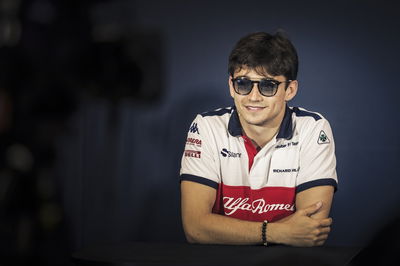
Praise from above
Speculation about a possible move to Maranello ramped up in the build-up to the French GP. Leclerc has tried to remain relatively unfazed by talk of a Ferrari seat as early as 2019, even if it is impossible for him to conceal the smile that creeps onto his face each time the question is posed to him by the media.
“Ferrari is a dream since I was a child,” Leclerc told reporters in France. “I’ve always dreamed and I always dream of one day being part of this team, but again I will repeat myself that I think it’s very important for me to not distract myself with what could possibly happen next year.”
At Paul Ricard, Leclerc provided perhaps his most emphatic response to the rumours yet, turning in a brilliant qualifying performance. Not only did Leclerc reach Q2 for the fifth time in as many races, he went one better. A sublime last-gasp effort put him into Q3, marking the first occasion a Sauber driver has made it into the final segment of qualifying since the 2015 Italian Grand Prix.
He ultimately secured eighth on the grid, outpacing fellow Ferrari-powered Haas drivers Kevin Magnussen and Romain Grosjean in the process. Had he matched his best Q2 lap, he would have also found himself ahead of Carlos Sainz’s Renault. The result sparked jubilant scenes from Vasseur on the pitwall and earned praise from two multiple world champions.
"I saw on the screen that Fred [Vasseur] was happy so I knew one of his drivers did well in Q2," remarked Sebastian Vettel, who previously admitted in Monaco he would be open to having Leclerc as his Ferrari teammate. “Eighth is an impressive result, they are still quite a long way behind with the car. For him he's doing the job, it's good for him and for Sauber as well to be up there and have chance to score points."
"There's a lot of pressure for him, being here in the south of France, so it's really, really good,” added Mercedes’ Lewis Hamilton. “I'm happy for him, particularly in that car, he's done a great job with what he has - probably even more, which is what you hope from a good driver.”
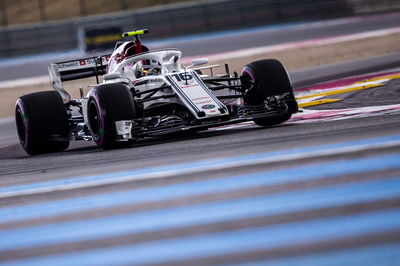
Ferrari’s conservative habits
If Ferrari’s previous history when it comes to picking drivers is anything to go by, it would suggest Leclerc is set for at least one more season at Sauber before being promoted to the Scuderia.
The Prancing Horse has often favoured experienced hands over youth. Signing Felipe Massa (then 24) to contest the 2006 campaign alongside seven-time world champion Michael Schumacher, was arguably the Italian squad’s most ‘risky’ move since the turn of this millennium.
Even on that occasion, Massa had already established himself as a solid points scorer during a three-year spell at the same Sauber squad Leclerc now finds himself at, as well as carrying out extensive testing for Ferrari.
Its current driver line-up totals a combined age of 68, with Raikkonen alone accounting for 38 of those. Graduation in 2019 for Leclerc, who only turns 21 in October, would send out a big statement.
The Kimi factor
The potential blockage in Leclerc’s path to Maranello comes in the shape of Raikkonen. The Finn, as brilliantly fast as he may be on his day, is now in the twilight years of his F1 career. Raikkonen has been in a cycle of one-year contract extensions for the past few seasons, annually posing Ferrari the dilemma of whether to stick or twist.
The problem for Raikkonen is that his day comes too few and far between compared to the consistency of Vettel. Despite a promising start to 2018, Raikkonen has struggled to extract the same levels of performance of mid-2000s Kimi with the current era of F1 cars since his return to the Scuderia in 2014. Raikkonen repeatedly shows flashes of promise on a Friday, only to come away from a weekend with a below-par result more often than not.
This has been increasingly more apparent across last season, given Ferrari’s resurgence and competitive machinery that ran Mercedes close in both world championships, and with all signs pointing towards an even greater charge this year as the Scuderia looks to seal its first title of any form in a decade. Ironically, Raikkonen played an integral role in Ferrari’s previous two championship triumphs.
But in the same time Vettel has taken 11 wins and 9 poles, Raikkonen has managed just a single pole to his name, while he has amassed nearly 200 points less than Vettel in the last two years alone - contributing far fewer points to his team’s total than Valtteri Bottas has at Mercedes. Raikkonen’s failure to match Vettel’s points tally on a consistent basis partly explains why Mercedes leads this year’s standings by a margin equivalent to a race win.
He may have demonstrated impressive race-pace on his way to the podium in France, but Raikkonen had the equipment to qualify much higher than just two spots ahead of Leclerc and behind both Red Bull drivers. Ultimately, a final decision is likely to be determined on Raikkonen’s form over the remainder of the season as much as Leclerc’s, but if the latter can keep pulling off heroics and exceeding expectations it will make him a very hard prospect to ignore.
Lewis Larkam’s verdict...
Sorry Kimi fans, but Leclerc should be placed alongside Vettel in 2019. A fan-favourite and an undeniably fantastic racer he certianly is, but Raikkonen has failed to bring home enough big results for too long. Granted, luck has not always been on his side and Ferrari’s strategy has been questionable at times, but ultimately his results mean the team is relying far too heavily on Vettel.
The manner in which Leclerc dominated en route to GP3 and F2 titles was hugely impressive and underlined his massive potential, but questions still lingered about how he would adapt to life in F1. He has answered any doubters in spectacular fashion, matching his teammate’s total career points tally in just eight races.
He brilliantly held off Fernando Alonso’s faster McLaren for several laps in Spain and did the same in Canada, before roles were reversed as he passed the two-time world champion in France. The season is long and inevitably there will some be bumps along the way, but provide him with race-winning machinery and there would be few to bet against him delivering. He is a world champion in the making, so why wait any longer? It’s time for Ferrari to be bold.
